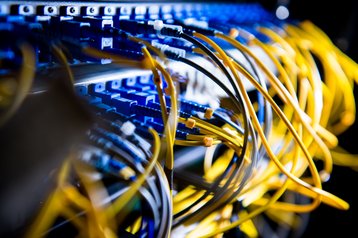Changes in the way digital infrastructure is delivered have led the industry to question whether copper cable connectivity is doomed, Huawei’s VP for network solutions, Lu Xingang, stated while speaking at CeBIT, Hannover’s annual trade and technology conference.
Increasingly, he said, critical services are being moved to the cloud; some predict that by 2025, all enterprise workloads will live in the cloud, as will 85 percent of all services.
The future is fibrous
What’s more, Xingang said, the emergence of IoT, with the underlying repercussions in terms of bandwidth and latency, will require a new kind of network infrastructure.
According to the Huawei executive, the existence of siloed connectivity services - broadband, IoT and wireless - increasingly needs to be addressed. With copper, different services and applications (voice, video, Internet) required separate cables, and fiber eliminates this problem.
None of this information is new, but it is also true that until recently, only telcos and hyperscale data center operators such as Facebook sought the use of all-optical cables. Despite this, four years ago Huawei introduced a sevice called Agile POL (Passive Optical LAN) for enterprise users.
The results have been positive, according to Xingang, as adopters willing to overhaul their entire network systems saw their bandwidth increased, latency more than halved, the size of their IT rooms reduced by 90 percent, and their engineering efficiency rising by 50 percent on average. What’s more, he said, their systems were tangibly more reliable and had longer lifecycles.
The technology has since been adopted by more than 200 customers in 40 countries, from Shenzhen’s video backhaul network - part of a gigabit fiber network built in partnership with China Telecom - to the Mexican Temptation Hotel in Cancun. And while Xingang did not confirm that the service would be made available to smaller companies, he asserted that “wider implementation is always better.”
Xingang acknowledged that copper remained the most used material across enterprise networks, as their needs in terms of ”latency and bandwidth” vary. The subtext of that statement is that switching from copper to fiber can be costly, and often uncalled for.
“Huawei is a leading vendor in all-optical and IP access, and our target is always to integrate more technologies to benefit our customers,” he added.

